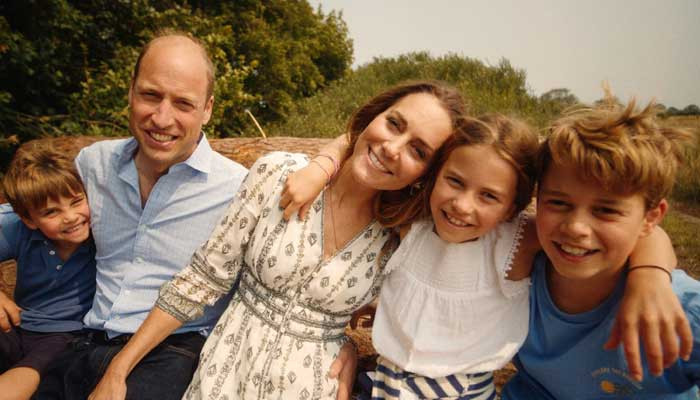Business
SMOKERS’ CORNER: THE ILLUSION oF AUTHENTICITY
字号+ Author:Smart News Source:Health 2025-01-11 05:08:14 I want to comment(0)
'Authentic’ has become quite the buzzword — especially in the world of consumer brands, and even in politics. Apparently, Gen-Z is all about seeking ‘authenticity’ as well. The assumption is that people are in search of ‘authentic experiences’ in an inauthentic world. But this isn’t a sudden occurrence. The context in which the word is being used was originally framed in the late 18th and 19th centuries, during the emergence of the Industrial Revolution in Europe, growing urbanisation and the demystification of religion. The desire to gain authentic experiences was firmly embedded in the so-called ‘Romantic Movement’ in various regions of Europe — especially among the middle classes. The aim of the movement was to escape the mechanised realm of factories, overcrowding, rising crime and also the stated supremacy of reason over emotion. To the Romantics of 18th/19th century Britain, for example, the authentic experience lay in the countryside, where people lived simple, uncomplicated lives and retained their organic connection with nature. The Romantics yearned for a past that was apparently free from “the tyranny of the machine.” They went looking for it in the countryside. They produced paintings of rolling green landscapes, wrote odes to the birds, bees and the trees, and some even decided to settle there. Yet, the fact was, the past that they were romanticising was brutal — populated by people with extremely short life-spans, incurable diseases, famines, superstition, illiteracy, religious exploitation etc. In her 1982 book Back to the Land, British scholar Jan Marsh wrote that some people tend to invest rural and more primitive societies with virtues they perceive as lacking in themselves. The term ‘authentic’ has evolved from a Romantic ideal into marketing gimmicks and aesthetic trends. In many cases, both at home and abroad, the search for authenticity often masks privilege, nostalgia and myth-making In the mid- and late-1980s, some of my friends and I often visited Bhit to attend the death anniversary [urs] of the 18th century Sufi saint Shah Abdul Latif. Bhit is still a small town in Sindh’s Matiari District. We were idealistic young men. We were romantics. Attending the urs was a way to break away from our ‘inauthentic’ urban, middle class lives in Karachi and experience the ‘authentic’ spiritual connection between the common people of Bhit and the memory of the saint. We always travelled by bus and, after attending the festivities at the shrine, we slept in the open fields just outside the shrine, amidst scorpions, snakes, ants, mosquitoes, heaps of cow dung, and the possibility of being ambushed by wolves. Such experiences can go a long way in shaping a deeper understanding of a people outside of one’s own class. But the truth is, there was really nothing ‘spiritual’ about our experiences. By 1990, I was convinced that spirituality, authenticity and virtues of simplicity that I was imagining in the common folk of Bhit, were actually misery and a reality that many young people in Matiari were desperate to escape. It wasn’t a wonderful display of authenticity that I discovered there, but something a lot more inspirational and admirable: a burning urge in young, downtrodden Sindhis to gain modern education and demystify what us romantics had mystified. They desired to become what we had wanted to escape. They neither had the time nor the resources to indulge in any fanciful notions of ‘authenticity’. They lived it. But they could not understand why anyone with more privilege and resources would want to seek it. I also came to believe that by romanticising the lifestyles of ‘simple’, underprivileged folk, one undermines their ambition to seek upward mobility. The privileged want the ‘simple folk’ to play out and perform the virtues that the seekers of authenticity have projected on them. As life got more complex in the 20th century, the meaning of authenticity mutated. From a longing to become ‘one with nature’ (in the countryside), parts of it became a craving to create national wholes rooted in memories of a gallant past. For example, to seek authenticity, all nationalisms are built on largely imagined and romanticised pasts. In Germany, for instance, the ultra-nationalists and then the Nazis painted a pre-modern past in which the Germanic people were noble, bold and ‘naturally’ superior. German nationalism became infatuated with ‘authentic’ manifestations of nationalism in which virtues — supposedly present in ancient Germanic people — were ‘revived’ in the shape of Nazism. Nazism became the ‘authentic’ German nationalism. How lovely. ‘Authenticity’ is being sought in cultural pursuits as well. One outcome of this has produced what is called “aesthetic poverty”, or “poor core”: well-off young people dressing like poor people. The clothes in this regard are designed and provided by high-end fashion brands. Examples include high-end fashion brands adapting the way 1960s’ hippies, 1970s’ Marxist revolutionaries, or 1990s’ scruffy grunge rock musicians looked. American media sarcastically dubbed this “radical chic.” The same happened with men’s shalwar-qameez which, after it was declared the “awami libaas” [the people’s dress] by the Z.A. Bhutto regime and then something related to Islam (by the Ziaul Haq dictatorship), was adapted by high-end fashion brands so that politicians, businessmen, bureaucrats, famous preachers and white-collar men could wear it and feel ‘authentic’. Things evolve and mutate. If they don’t, they’ll stagnate and wither away. Nothing’s authentic as such. A well-known Pakistani chef once quipped on a TV show: “People ask me to prepare authentic Mughal nihari. I tell them, if I do, you will outright reject its taste. You’ll spit it out!” On the one hand, authenticity is a marketing ploy and, on the other, a romanticised delusion. To truly experience authenticity, one will have to literally travel back in time. And if it is ‘authentic’ 17th century Mughal nihari they’re looking for, then they better make sure to carry with them a few boxes of packaged masala.
1.This site adheres to industry standards, and any reposted articles will clearly indicate the author and source;
 Related Articles
Related Articles-
پاکستان بمقابلہ جنوبی افریقہ: گرین شرٹس کے تین کھلاڑیوں کے آؤٹ ہونے کے بعد پروٹیز نے کمان سنبھال لی
2025-01-11 04:51
-
Jennifer Lopez, Ben Affleck reunite at home with son Samuel in Los Angeles
2025-01-11 03:52
-
Zara Tindall escapes dangerous incident
2025-01-11 03:31
-
Hugh Jackman, Sutton Foster share relationship update with big move
2025-01-11 03:13
 User Reviews
User Reviews Recommended Reads
Recommended Reads Hot Information
Hot Information- سائم ایوب کو آئی سی سی مینز ایمرجنگ کرکٹر آف دی ایئر 2024 کے لیے نامزد کیا گیا
- ‘Amores Perros’, ‘Die Another Day’ actor Emilio Echevarría dies at 80
- Nikki Glaser details her banned jokes from 2025 Golden Globes
- Tom Holland, Zendaya reportedly engaged: Inside their 'intimate' proposal
- ویسٹ انڈیز 19 سال بعد پہلی ٹیسٹ سیریز کے لیے پاکستان پہنچے
- Bad Bunny finally breaks silence on Kendall Jenner speculations
- ‘Amores Perros’, ‘Die Another Day’ actor Emilio Echevarría dies at 80
- Jennifer Lopez, Ben Affleck reunite at home with son Samuel in Los Angeles
- بھارت اور آسٹریلیا کے درمیان چوتھے ٹیسٹ میچ میں ایم سی جی کی شرکت کا ریکارڈ ٹوٹ گیا۔
 Abont US
Abont US
Follow our WhatasApp account to stay updated with the latest exciting content













